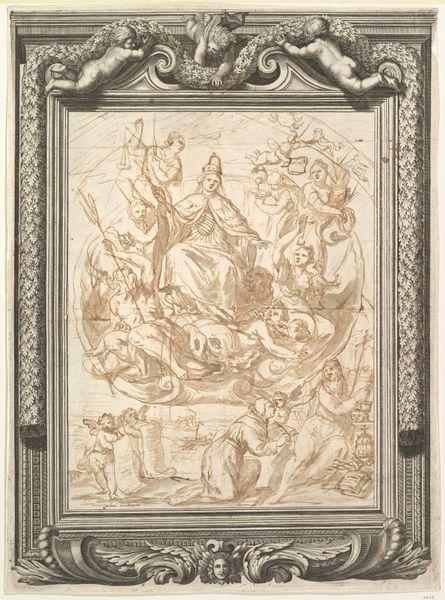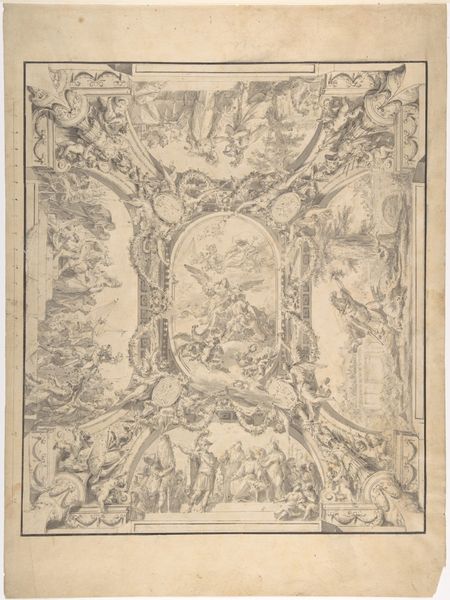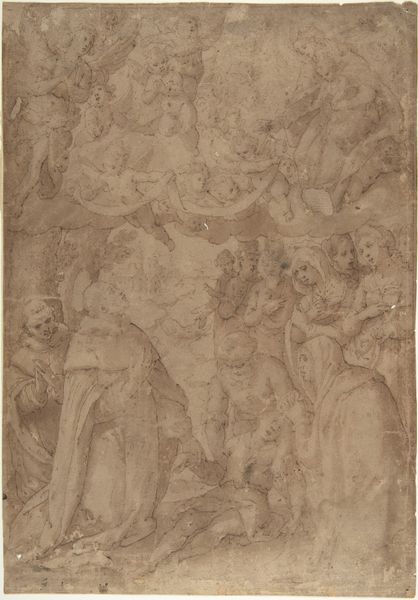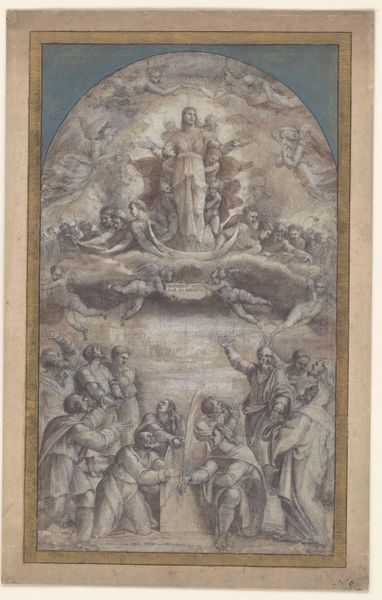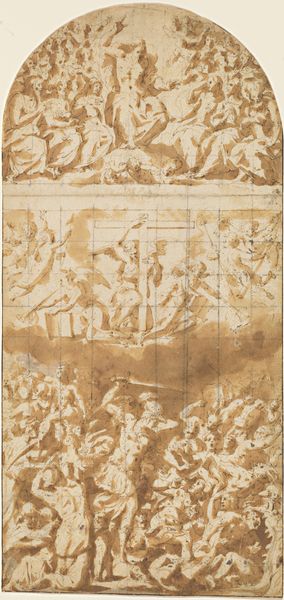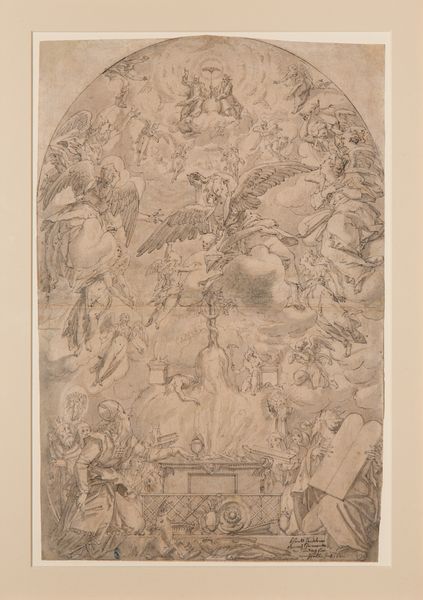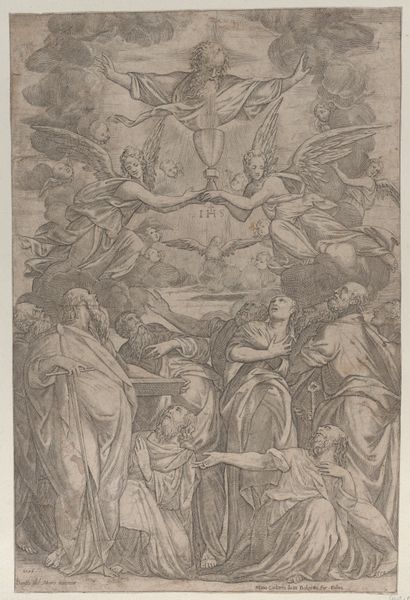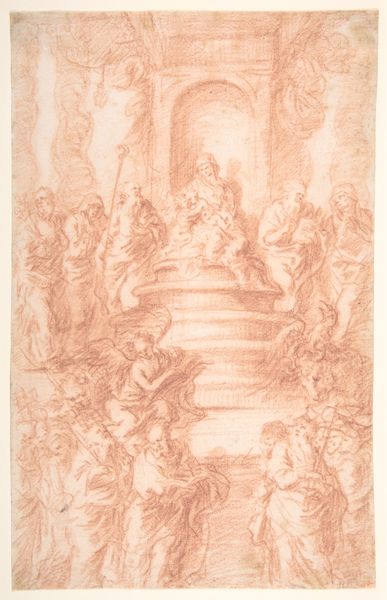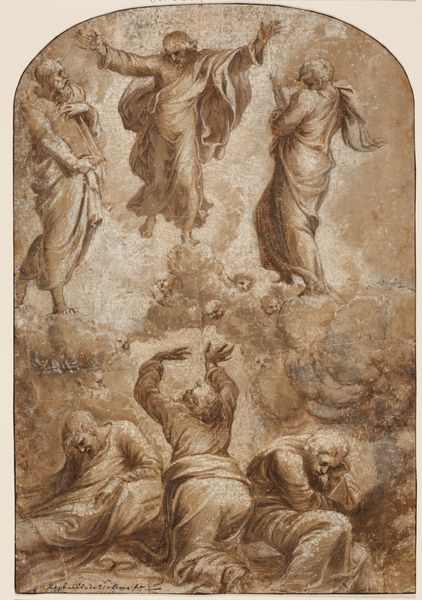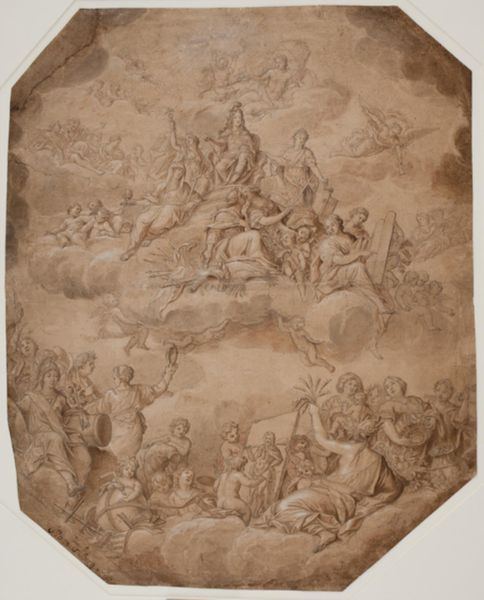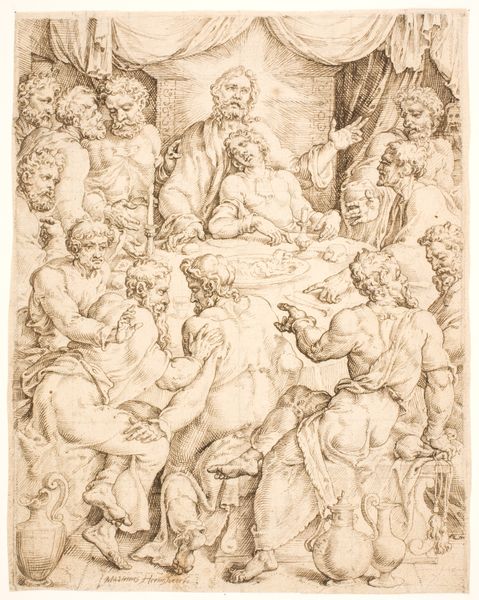
drawing, paper, ink
#
drawing
#
wood texture
#
toned paper
#
narrative-art
#
figuration
#
paper
#
11_renaissance
#
ink
#
history-painting
#
italian-renaissance
Copyright: Public domain
Curator: Welcome. We’re standing before Francisco Pacheco’s sketch from 1614, titled "The Last Judgement", housed here at the Museo del Prado. It’s rendered in ink on toned paper. Editor: My first impression is one of ethereal chaos, a celestial swirl rendered in delicate lines. The limited palette evokes a sense of antiquity and faded grandeur. Curator: Indeed. Pacheco’s choice of toned paper serves to unify the composition and accentuate the contrasting values within the ink drawing. Notice the organization of the figures into distinct registers, a clear visual hierarchy mirroring the celestial order. Editor: That order is punctuated, of course, by dynamic movement, especially noticeable in the lower registers depicting the resurrected souls. Pacheco stages this eternal moment to address both earthly and divine audiences. Curator: Precisely. Consider, too, the prominent cross at the work’s center, held aloft by angels. Its placement creates a focal point and anchors the swirling forms, thereby emphasizing the instrument of salvation at the heart of this cosmic drama. What message might it give to those on Earth? Editor: Absolutely, the theatrical quality emphasizes the socio-political context. The Spanish Inquisition looms large in this era, so paintings such as this remind all members of society of Church power. Curator: It speaks volumes, this drawing. The stark, linear quality allows Pacheco to explore the drama of the scene. Observe, if you will, how the density of line varies across the composition. He achieves contrast of value despite working with a monochrome palette. Editor: And how interesting to see the artist playing with tradition even while clearly following expectations for depicting a familiar scene! The toned paper almost invites a meditative reading, a reflection on mortality and ultimate justice within the Church. Curator: Considering its scale and complexity, the sketch serves to show how even works that aren’t necessarily considered “finished” are so significant when trying to decipher art history. I appreciate that the linear quality grants the work an intensity even centuries later. Editor: Indeed, examining "The Last Judgement", as conceived by Pacheco, we understand the fusion of technique, cultural meaning, and, perhaps, a bit of personal philosophy embedded within this remarkable drawing.
Comments
No comments
Be the first to comment and join the conversation on the ultimate creative platform.
